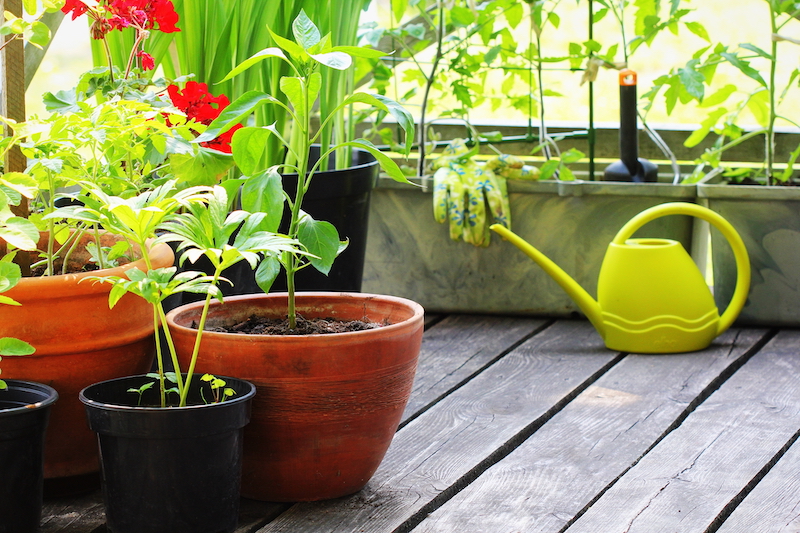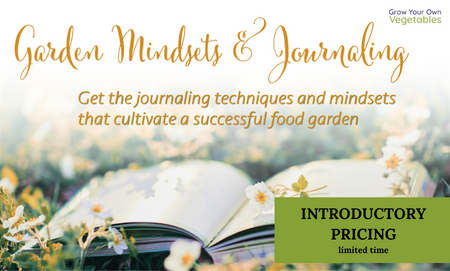Container gardening opens up a world of possibilities, offering flexibility, control, and accessibility. Whether you’re growing in a small space or seeking to make gardening easier on your body, container gardening has empowering benefits for all gardeners. Let’s dive into how containers can transform your gardening experience.
1. Accommodating Picky Plants!
One of the most empowering benefits of container gardening is the ability to cater to even the most particular plants. In traditional gardens, your soil structure and nutrients are limited by what’s available in the ground. With containers, you can customize the soil composition and adjust the nutrient mix to meet the needs of a wide variety of plants. Whether you’re growing plants that require specific pH levels or those that thrive in well-drained soil, containers give you the control to create the perfect growing environment. This means you can grow more diverse plants that wouldn’t otherwise thrive in your native soil.

2. Making the Most of Your Garden Space
No matter how much space you have, container gardening lets you maximize it. Whether you’re working with a tiny apartment balcony, a rooftop, or even windowsills, containers let you grow both outdoors and indoors. You’re not limited to just the ground—you can place containers in any sunny spot. This makes gardening accessible to people with limited outdoor space, while still giving them the freedom to create their own green oasis. Plus, containers are portable, so you can move them around to optimize sunlight exposure or protect them from harsh weather.
3. Accessibility for Gardeners with Limited Mobility
As many gardeners age, physical challenges can make traditional gardening methods more difficult. The bending, kneeling, and heavy lifting required for in-ground gardening can take a toll. Container gardening, however, offers a solution for gardeners with limited mobility. Raised containers, vertical planters, and pots at accessible heights reduce the physical strain and make it easier to tend to plants. You can garden from a comfortable standing or sitting position, allowing you to continue enjoying the therapeutic benefits of gardening without the discomfort. Container gardening creates a more accessible, sustainable gardening practice for everyone.

Whether you have picky plants, limited space, or physical limitations, container gardening empowers you to grow what you love with more flexibility and control. It allows you to customize the environment for your plants, maximize your available space, and keep gardening accessible for everyone. Start your container garden today and discover how much more you can grow with just a few pots!
Related articles you may enjoy:
Small Scale Vermicomposting You Can Do Anywhere
Getting Started Growing Your Own Vegetable and Herb Seedlings
Keys to Partner with Mother Nature
Masterclass on YouTube:
Please share in the comments below ways that you’ve added ease into your gardening process with container gardening.
![]()














Thank you for the amazing blog post!
Our 60 year old neighborhood is so shady that the best sun is on the newly added deck on the west side of the house. There I grow my favorite varieties of hot peppers in large pots. When a thunderstorm is coming I can easily slide them under the eaves of the house for protection — something that I couldn’t do on the ground beneath.
In response to Jacquie Walburn,
Quite happy to list a few ideas/options for container garden materials, and to do a bit to evaluate the different options!
Some of the easiest to access and work with are likely purchasable plastic garden bed containers which come from various companies in all different shapes and sizes to fit what you want. These often last a good 3-7 years depending on the quality.
Galvanized steel is often the ideal choice for those able to come by it due to its self-supporting structure and its strong resistance to corrosion and therefore long life! There are products such as the Forever Garden Bed (https://forevergardenbeds.com/) which are made from galvanized steel in a premade shape for a garden bed; however, one could likely purchase the necessary materials to build one for themselves at their local Home Depot-like store including the galvanized steel and corner brackets or corner posts to give them structure! Be careful of sharp edges around kids as well! Either grind them down smooth or cover them.
The next option is wood! Wood of course will not last as long as galvanized steel, but it will provide better aeration to your garden. There is the traditional option of building a container out of wood with 2×4 boards or 2×8 boards with either 4×4 posts at the corners or you can use metal brackets to brace the corners. The 4×4 corner posts are usually the part of a raised bed/container garden to rot out, so using metal brackets instead can help prolong the life.
Often people like having their container gardens built on wheels (“Rolling garden beds”) in order to be able to follow sun patterns or even move inside to avoid particularly harmful weather. Vego Garden Beds provides options for this (https://vegogarden.com/collections/garden-beds)
Layout options I feel are nearly limitless. Often that will come down to your personal wants and needs from the space which we as gardeners often refine over time. If we can help with your garden layout in any specific ways we would surely love to help!
Quite appreciate your question! Cheers!
In response to Vee,
A few options for food safe containers would be pickle or sauce/condiment buckets which restaurants often receive their food in. These can usually be easily acquired from restaurants just by asking. If they don’t have any on hand at the time, they are often happy to save them up for a week or so in order for you to come back for them. Particularly for young plants, even large yogurt containers, plastic ice cream tubs, or milk jugs with the top cut off can be used. Be sure to drill holes for drainage if opting for either of these options.
Thank you so much for asking! Let me know if there is any further way we can help!
In response to both Vee,
A few options for food safe containers would be pickle or sauce/condiment buckets which restaurants often receive their food in. These can usually be easily acquired from restaurants just by asking. If they don’t have any on hand at the time, they are often happy to save them up for a week or so in order for you to come back for them. Particularly for young plants, even large yogurt containers, plastic ice cream tubs, or milk jugs with the top cut off can be used. Be sure to drill holes for drainage if opting for either of these options.
Thank you so much for asking! Let me know if there is any further way we can help!
In response to Joyce’s question,
There are conflicting opinions on whether polystyrene foam/styrofoam is a safe medium to use for a container garden; however, it can be summed up fairly briefly! Some say that the material will leach into your vegetables, but here is where the confliction is. Currently there is a lack of evidence out there about this, but what currently seems like the answer that holds the most water is that polystyrene generally is not going to leach into your plans because it would first require the material to break down which synthetic materials such as Styrofoam typically first requires either high-heat or chemical solvents to begin breaking down.
All this to say, it is likely that polystyrene foam is a suitable material for a container garden IF particularly high heats are avoided. An experiment with a styrofoam cup which I’ll link to below mentions the temperature range of 75°F-176°F as the range which they found leached into the water in the cup. Other sources say it is safe to do so as long as it’s kept out of direct sunlight.
https://www.frontiersin.org/articles/10.3389/fmars.2018.00071/full#:~:text=(2008)%20found%20styrene%20concentrations%20ranging,min%20in%20a%20polystyrene%20cup.
Hi Stacey,
I’ve learned aLOT from you. Thank you SO much for encouraging us to grow food in whatever space we have.
It’s been very enjoyable! Even when my plants were sabotaged by some horrible people who have keys to my apartment. I keep going. I will NEVER quit no matter what.
One question. Is it OK to grow food in polystyrene boxes?
Cheers!
Are there any suggestions for food grade containers?
Also, the wooden frame as pictured above?
Thanks.
we live in Israel and have a large organic vegetable garden. every 7th year in Israel is a sabbatical for the garden (aka Shmitta) and among some of the practices is all planting must be done before the Jewish New Year-no spring or summer garden during this year. we decided to begin a hydroponic indoor garden during this years “sabbatical”and are enjoying it so much that we will continue with the hydroponics even after this year has ended, as well as continue with our outdoor raised bed garden. we currently have several hundred jars of various leafy greens-5 kinds of lettuce, 2 kinds of asian greens, 4 kinds of beets that we are growing for the leaves, arugula , culinary herbs, cress , 3 kinds of kale, arugula and spinach. the jars sit on shelves which we have fitted with led grow lights. very differernt from the outdoor garden! and a different kind of container garden that we think is worth looking into!
Got any pics of different types of container gardening?
Lay outs, pairings,….